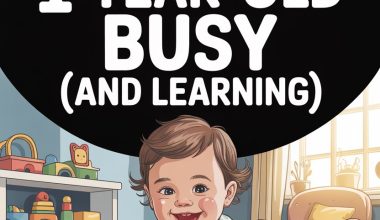They say money can’t buy happiness, but try telling that to a six-year-old eyeing a glittery unicorn pencil case.
Most parents agree kids should learn about money before they’re let loose on the world, but “money smarts” isn’t exactly a standard bedtime story.
The humble allowance, though, can be the secret weapon in your arsenal—if you know how to wield it.
Making Allowance Count
Allowance isn’t just a weekly payout—it’s a mini training ground for real-life money management.
Handled well, it teaches budgeting, saving, decision-making, and (yes, sorry, kids) the hard lesson that you can’t have it all at once.
You don’t need a finance degree or colour-coded spreadsheets. You don’t even need to remember which week it is—there are apps for that.
What it really takes is a willingness to talk about money openly, set clear expectations, and be consistent.
The good news? Any busy parent can pull this off, even if you haven’t balanced your own chequebook since 2006.
Setting the Ground Rules
Before coins or notes change hands, it pays to get a few basics sorted.
Are you giving cash every week, every month, or “sometimes when we remember”? Will allowance be tied to chores, or is it just part of family life, like broccoli and heated debates about bathtime?
Experts are a little divided here.
Some say kids should earn allowance by doing chores. Others believe tying money to tasks can make children view family contributions as optional—“No, thanks, Mum, I don’t need money this week, so I’ll leave you to the bins.”
If you do connect allowance to chores, consider separating basic expectations (like clearing their plate) from extra earning opportunities (washing the car, weeding the garden).
Whatever you decide, clarity is your best friend. Spell it out: when, how much, any conditions, and what happens if they “forget” to do their part. Even a sticky note on the fridge trumps vague promises.
How Much Is Enough?
No mystery formula here. The right amount depends on your family’s budget, your child’s age, and what you expect them to cover.
Five pounds a week to a seven-year-old might feel like a fortune, while the same sum barely covers a teenager’s phone top-up.
A common guideline is £1 per year of age each week. But if your child is expected to pay for social outings, school lunches, or birthday gifts, adjust accordingly.
The goal isn’t to make your child independently wealthy by Year 9. You want them to have enough to make meaningful choices—but not so much that they skip the lessons in prioritising.
And if you’re worried about being too stingy or too generous, don’t sweat it. Research shows consistency and conversation matter more than the exact amount.
The Power of Consistency
Missed weeks. IOUs scribbled on the back of envelopes. The “I’ll give you double next Monday” trap. Kids notice.
Consistency solidifies trust and lets your child actually practice managing money.
Whether you’re handing over coins, chucking allowance into a reputable kids’ banking app, or using a mug labelled “Allowance or Bust,” sticking to a regular schedule is key.
If you need a reminder (and who doesn’t?), set an alarm, use a chart, or outsource to an app. Just don’t let your system become more complex than assembling flat-pack furniture.
Discuss, Don’t Lecture
Money can be as taboo as politics at a family barbecue. That’s a missed opportunity.
Normalise money talk. When allowance day rolls around, use it as a chance to chat about what went well, what didn’t, and what’s on the wish list.
No need for a TED Talk—simply ask, “Got any plans for your cash?” Or, “Anything you’re saving up for?”
Admit when you make money mistakes. Share stories about your own financial wins and facepalms—like the time you spent your birthday money on novelty socks and instantly regretted it.
Kids appreciate honesty, and it keeps the conversation real.
Let Them Fumble
It’s tempting to “save” your child from every iffy purchase. But learning from a regrettable impulse buy is more powerful than a stern lecture.
If your child spends three weeks’ allowance on a toy that breaks by Tuesday, resist the urge to rescue. Sympathy? Absolutely. Bailout? Not this time.
These small stumbles help kids gain financial confidence—and it’s far better to blow a fiver on slime now than a month’s rent at uni.
Introducing Saving, Spending, and Giving
A common approach is to split allowance into three jars or virtual accounts: Save, Spend, and Give. This model lets kids see that money isn’t just for instant gratification.
Encourage them to put some aside for bigger goals, spend a portion on treats, and give a little to charity or causes they care about.
The percentages can be flexible—some families do 50% spend, 30% save, 20% give; others adjust to fit their values.
If you’re keen to skip collecting coins, apps like RoosterMoney or GoHenry allow kids to manage digital “pots.”
Tech-savvy kids might even prefer watching their savings grow on a screen (and it’s one less thing to trip over in the lounge).
Setting Savings Goals
Most children aren’t born savers. Shocking, I know. But setting a specific goal—a new game, a trip to the cinema, a pair of trainers—makes saving real.
Help them work out how many weeks it’ll take to get there. Draw a chart or keep a tally on the fridge. Celebrate milestones, even the halfway mark.
You don’t need fanfare and confetti, but a “You’re getting close!” goes a long way.
If you’re feeling extra, some parents offer a “matching scheme”—for every pound saved, you add a little bonus.
Just be clear when the “parent match fund” closes. Otherwise, you’ll end up bankrolling a 47-inch television.
Budgeting for Grown-Ups in Training
As your child gets older, try letting them manage more of their own expenses. Maybe they take over paying for their school lunches, snacks, or even their mobile top-up.
Hand over the relevant cash at the start of the week, then zip your lips (within reason). When the money’s gone, it’s gone.
It’s a safe way for kids to experience the thrill of budgeting—and the agony of running out of snack money on Thursday.
Don’t be surprised if the first couple of weeks end in a hangry meltdown. That’s part of the learning curve.
Handling Sibling Comparisons and Complaints
Nothing lights the “That’s not fair!” fire like hearing what a mate or sibling gets for allowance.
Comparison is inevitable, but you can short-circuit a lot of resentment by explaining your reasoning.
Age, responsibilities, and family budget all play a part.
If your eldest is grumbling, try involving them in the conversation. Maybe they can negotiate for more allowance by taking on extra jobs—think dog-walking, not CEO.
And when your child whines that their friend gets double, you can always say, “Lucky them!” and stick to your guns. (Or, if you’re feeling cheeky, offer to swap your mortgage, too.)
Allowance in a Cashless World
With coins and notes fast becoming museum exhibits, children need to learn about digital money, too. That’s where prepaid cards and child-safe banking apps shine.
These tools let kids check balances, set savings goals, and even receive pocket money automatically. Plus, you get full parental oversight (and can freeze the card if it ends up in the washing machine).
Just keep an eye on fees—some apps charge monthly—but for many families, the convenience trumps the cost.
Still, don’t underestimate the power of handing over physical cash, especially for little ones. Nothing beats the drama of watching coins clink into a piggy bank.
Allowance Isn’t the Only Teacher
Pocket money is a powerful teacher, but it isn’t the only one. Include your child in real-life financial decisions when possible. Let them help plan the grocery budget, compare prices, or decide whether the “two for one” offer is actually a deal.
Got a teenager? Show them how direct debits, online banking, and even credit scores work. Nothing beats seeing money in action.
And don’t forget—the best lessons stick when you’re not trying too hard.
If you mess up, laugh it off. If you forget allowance, own it. If your child blows their savings on a singing toothbrush, that’s a story for the ages.
Growing Money Smarts, One Week at a Time
Teaching kids about money isn’t a sprint or a high-stakes test. It’s a series of small, everyday moments, with enough mistakes and laughs to fill a sitcom.
Allowance offers a steady way to practice—through saving, spending, giving, and learning from every wonky choice.
Hang in there.
Your child may not thank you now, but when they’re the only student at uni who knows how to compare bank fees or avoid pricey payday loans, you’ll be the unsung hero.
And if all else fails? There’s always the glittery unicorn pencil case.





